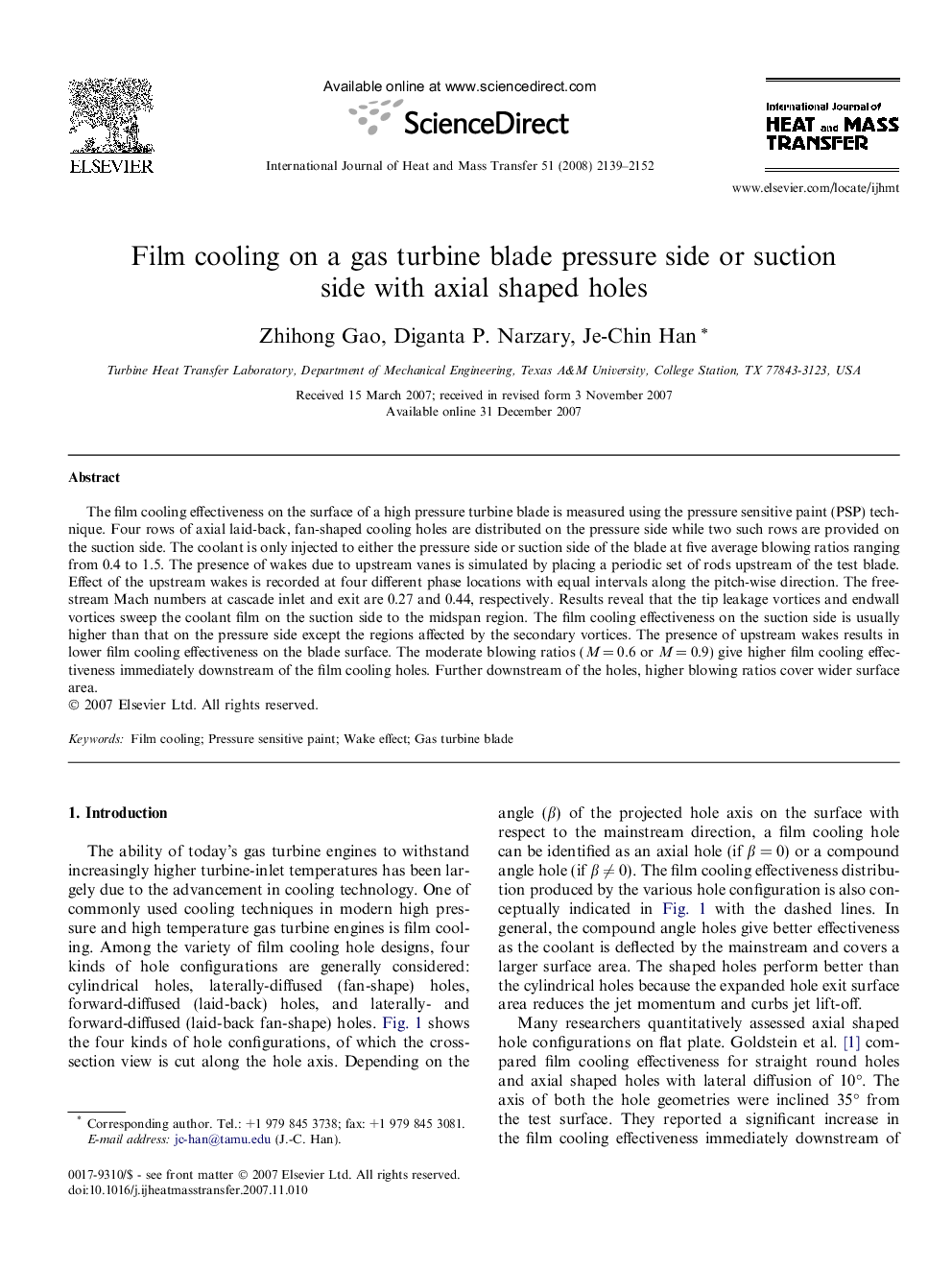| Article ID | Journal | Published Year | Pages | File Type |
|---|---|---|---|---|
| 662640 | International Journal of Heat and Mass Transfer | 2008 | 14 Pages |
The film cooling effectiveness on the surface of a high pressure turbine blade is measured using the pressure sensitive paint (PSP) technique. Four rows of axial laid-back, fan-shaped cooling holes are distributed on the pressure side while two such rows are provided on the suction side. The coolant is only injected to either the pressure side or suction side of the blade at five average blowing ratios ranging from 0.4 to 1.5. The presence of wakes due to upstream vanes is simulated by placing a periodic set of rods upstream of the test blade. Effect of the upstream wakes is recorded at four different phase locations with equal intervals along the pitch-wise direction. The freestream Mach numbers at cascade inlet and exit are 0.27 and 0.44, respectively. Results reveal that the tip leakage vortices and endwall vortices sweep the coolant film on the suction side to the midspan region. The film cooling effectiveness on the suction side is usually higher than that on the pressure side except the regions affected by the secondary vortices. The presence of upstream wakes results in lower film cooling effectiveness on the blade surface. The moderate blowing ratios (M = 0.6 or M = 0.9) give higher film cooling effectiveness immediately downstream of the film cooling holes. Further downstream of the holes, higher blowing ratios cover wider surface area.
